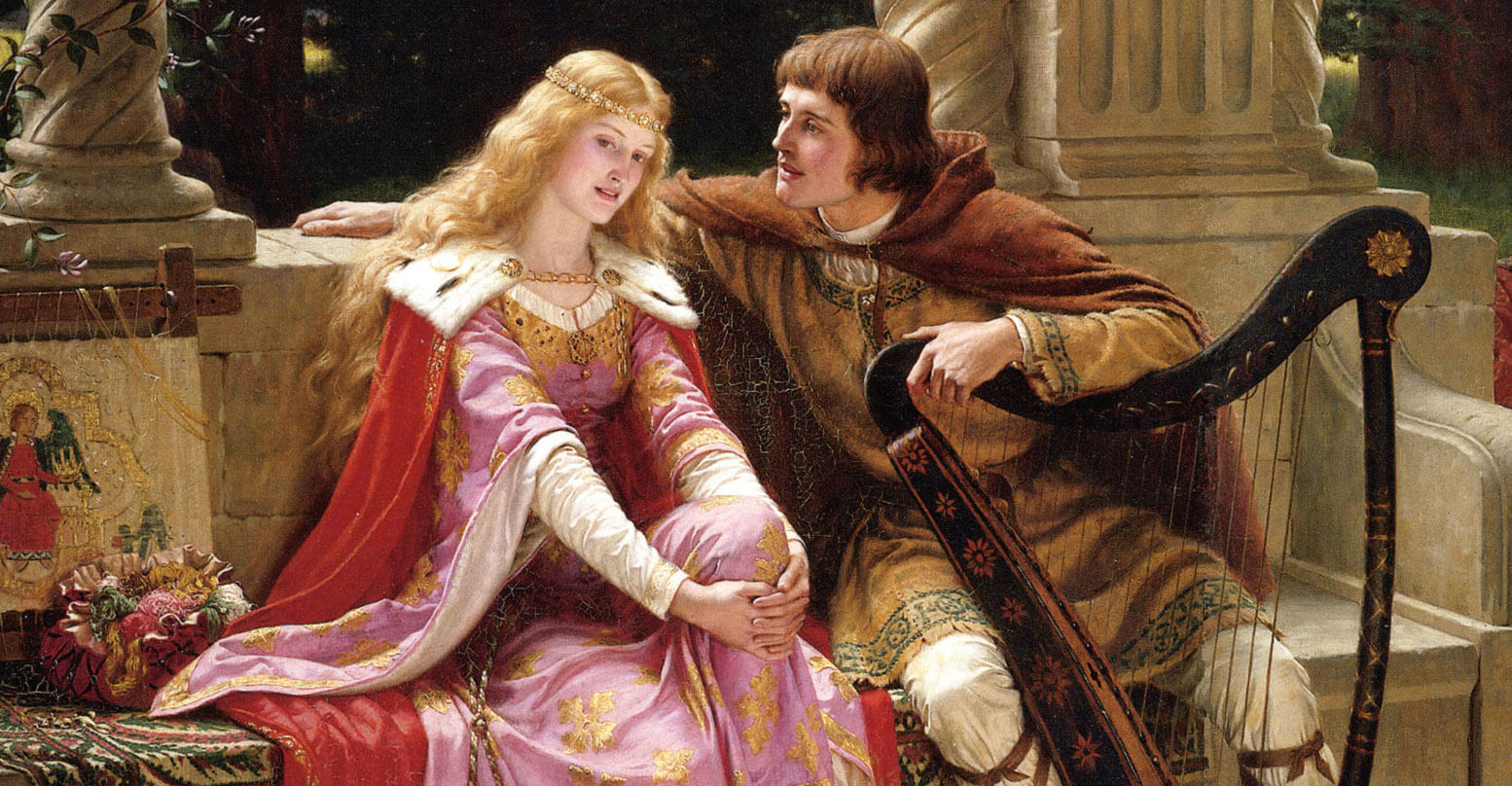How to Write a Love Letter (Classically, of Course)

It has become the fashion—almost, even, the mark of humility—to begin any communication of strong emotion with the tag, Words cannot express. As in, words cannot express how grateful I am, how sorry I am, how excited I am; words cannot express my surprise, my delight, my anger; words cannot express how much I regret, or how much I forgive, or how much I love.
Perhaps this is all unsurprising, given the shrinkage of vocabulary and depletion of connotation that our poor old English language has suffered in modern usage. Perhaps it’s true that our words, at any rate, aren’t up to the task of naming, measuring, inflecting, or remembering the impulses that play across our souls like light and shadow atop water.
But fashions slouch away from effort; vices can hide behind virtues; and the truth is that words have expressed, with stunning precision and pathos, feelings far more intricate than the ones we decline to anatomize on a Hallmark card. If a form of humility makes us doubt our ability of expression, a form of sloth keeps us from trying.
Consider, for instance, in the spirit of Valentine’s Day, that most deep and daunting emotion of love. Though poets and pop stars alike have spilled their proverbial gallons of ink upon it, love remains the emotion we ordinary folk are most likely to blot with an apologetic Words cannot express—if only to keep us from scribbling through an even more unfortunate Roses are red routine, or from skipping sincerity at all and retreating behind a joke.
But love, of all emotions, ought to be expressed in words—for love’s highest human consummation, marriage, is made of and sustained by words. Feelings ebb and surge, but the words of the wedding vow sound the depths of a vital love.
So, on Valentine’s Day, to try to write of love is its most fitting tribute and exercise. But . . . how to do it? How to write a love letter worthy of the name? Well, classically, of course. Turn to those who have done it best, and learn by imitation.
You might, for instance, invent a fresh simile that illumines some aspect of your love by comparing it to a familiar object. Shakespeare famously compares his beloved to “a summer’s day” in Sonnet 18; in Sonnet 116, he names love itself “an ever-fixed mark,” the North Star. No poet invented more extravagant similes than John Donne: in his love poems, he and his beloved together become the world, a flea, a compass, candles, a kingdom—each image delighting in a different facet of love’s transformation of two into one.
But if images daunt you, if you’re more mathematically inclined, why not measure your love? One of tenderest love poems I know, Elizabeth Barrett Browning’s “How do I love Thee?”, literally “counts the ways” and takes the measure of her love for her husband, fellow poet Robert Browning, giving depth, breadth, height, and level each their quantity and unit of measure. Differently, Andrew Marvell’s “The Definition of Love” immortalizes the geometry of an impossible love: “As lines, so loves, oblique may well / Themselves in every angle greet; / But ours so truly parallel, / Though infinite, can never meet.”
Letters are ordinarily written when two people are separated; it makes sense, then, that poignant love letters have been written about one’s feelings when separated from the beloved. Take, for instance, “A Letter to her Husband, absent upon Publick employment” by Anne Bradstreet, a colonial wife and mother whose poems were spun from daily life. Also in the genre is Eve’s love song to Adam in John Milton’s Paradise Lost, wherein she catalogues all the moments of her life that are made sweet by his presence, or lose their sweetness in his absence.
You might also try imitation from a different angle: imitating, not someone else’s writing about love, but someone else’s story of love. History and literature are a trove, not only of exemplary courage and loyalty and cunning, but of romance: Odysseus and Penelope, Orpheus and Eurydice, Palamon and Emily, Rosamund and Orlando, Beatrice and Benedick, Elizabeth and Darcy, John and Abigail Adams, Thomas “Stonewall” and Anna Jackson, Sheldon and Davy Vanauken, to name but a few. To compare your own romance to such as these is both to honor it and to exhort it to follow in their way.
Lastly, there is always room in a love letter to exult in the beauty of the beloved. Renaissance poetry brims with “blazons,” poems whose strategy is simply to catalogue, from head to toe, all that catches the lover’s eye and heart. A blazon need not be terribly original: the goal is not so much to draw an exact portrait as to express that the beloved is the ideal of beauty in the eyes of the lover, often by attributing traditional idealized descriptions. Variations are possible; Robert Herrick and and Ben Jonson drew attention to their beloved’s clothes, while John Milton wrote a blazon describing the inner beauty of virtue. But for sheer glorying in the beloved’s beauty, no example outdoes that of Scripture’s Song of Songs.
Or—if all these fail to find you words to express; if “turning other’s leaves” leaves you with “sunburn’d brain”; if you find yourself “Biting [your] truant pen, beating [yourself] for spite”—then take some heart and humor and a lead from Andrew Marvell’s own experience of writer’s block. He finally overcame it by making it the subject of his love letter, and that’s always an option too.

Lindsey Brigham Knott
Lindsey Knott relishes the chance to learn literature, composition, rhetoric, and logic alongside her students at a classical school in her North Florida hometown. She and her husband Alex keep a home filled with books, instruments, and good company.










